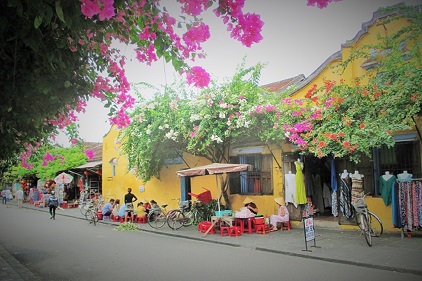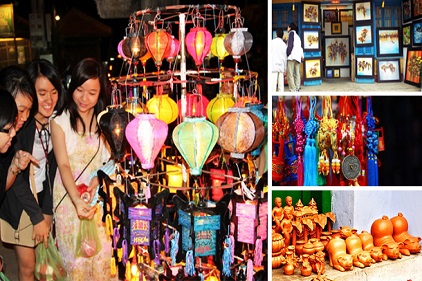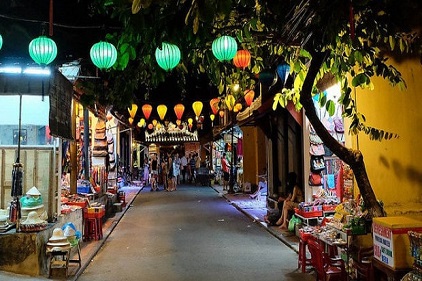Post on : 23 June, 2016
Come to Hoi An, home back to the last century. The town was used for two hundred years as one of Vietnam’s most important trading ports. It had been occupied by the Chinese, Japanese and Europeans traders and their influence is visible throughout the old town, especially in the temples and houses built by merchants who came to trade but instead set down roots. Towards the end of the 18th century the river slowly silted up; although this eventually led to the end of trade, it helped preserved the town, so that in 1999 it became a UNESCO World Heritage Site.

The best way to discover Hoi An is to simply wander. Little more than a maze of a few streets, there are temples, museums and preserved houses to visit. The Old Town starts at the Japanese Covered Bridge – the Lai Vien Kieu, which means ‘Japanese Pagoda’. This gracefully arching bridge of brick and timber was first built in the early 17th C, but had been rebuilt several times due to flood and fire.
At one end is a dog (the year in which the bridge was at the start to be built) and at the other a monkey (the year in which the bridge was finished.) The stream under the bridge is quite tiny; a reflection of how much the river has silted up over the centuries. Half-way across the bridge is a small temple dedicated to Tran Vo Bac De, God of the North, who controls the weather.

The unique influence of the Chinese and Japanese traders (many who became settlers) can be seen in the buildings, especially along Tran Phu and Nguyen Thai Hoc. Most are two stories, their roofs covered in tiles and presenting a unique skyline, the result of the amalgamation of Chinese, Japanese and Vietnamese styles. Inside, a large interior room is topped by an upper gallery. The rooms are a wonder of hand-carved woodwork, with exquisite inlays and rich detailing. The main room opens onto a sundrenched (or rain-filled!) outer courtyard.

In the old part of Hoi An, coloured lanterns adorn every house, and at night the soft glow of candle-light settles over the town. Every full moon, the electricity is switched off and a procession winds through the candle-lit streets to the river, where the lanterns are set free.
Then, of course, there are the tailors. Hoi An is a clothes-shoppers heaven. Everyone has their favourite stall, and hotel concierges have good recommendations. Clothes can be made in 24 hours, but it is best to have a fitting. The easiest way is to have a dress or outfit which fits perfectly, and have them to copy it.
Yes it’s touristy and the touts can get annoying at times, but wander only a few minutes away from the centre and things really change. The tourists and touts disappear, and peace and quiet is yours to enjoy. The immediate surrounds of Hoi An looked very interesting and if I’d had a full day there I would have loved to have hired a bike and spent a few hours exploring. It’s an area that certainly lends itself to such an activity.














.jpg)


